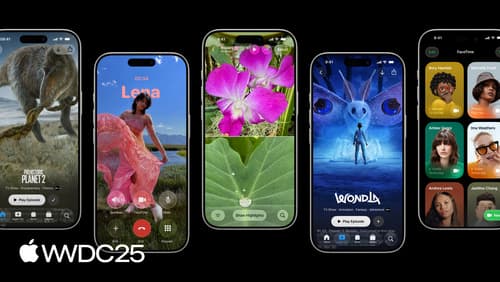UIKit best practices
Asked on 2025-06-16
1 search
To ensure your UIKit app is flexible and follows best practices, consider the following guidelines from the WWDC sessions:
-
Adopt Scene Lifecycle: Transition to using the scene lifecycle to make your app more adaptable and portable. This is crucial as many legacy UI application-focused APIs are being deprecated. Make your UIKit app more flexible
-
Use Container View Controllers: Utilize container view controllers like
UISplitViewControllerandUITabBarControllerto manage components of your UI effectively. These controllers help in creating a flexible and adaptive UI. Make your UIKit app more flexible -
Leverage Layout Guides and APIs: Use layout guides and other APIs to build an adaptive UI that can handle various screen sizes and orientations. This ensures your app provides a great experience across different devices. Make your UIKit app more flexible
-
Remove Deprecated Keys: The
UIRequiresFullScreenkey is deprecated and should be removed from your app's Info.plist. This key is no longer necessary for adaptable apps. Make your UIKit app more flexible -
Automatic Observation Tracking: In iOS 26, UIKit integrates Swift observation at its core, allowing for automatic observation tracking. This feature helps in keeping your UI in sync with model changes without extra code. What’s new in UIKit
By following these best practices, you can ensure that your UIKit app is modern, flexible, and ready for future updates.

Make your UIKit app more flexible
Find out how your UIKit app can become more flexible on iPhone, iPad, Mac, and Apple Vision Pro by using scenes and container view controllers. Learn to unlock your app’s full potential by transitioning from an app-centric to a scene-based lifecycle, including enhanced window resizing and improved multitasking. Explore enhancements to UISplitViewController, such as interactive column resizing and first-class support for inspector columns. And make your views and controls more adaptive by adopting new layout APIs.

What’s new in UIKit
Modernize your app with the latest APIs in UIKit, including enhanced menu bar support, automatic observation tracking, a new UI update method, and improvements to animations. We’ll also cover how you can include SwiftUI scenes in your UIKit app and explore SF Symbols, HDR color pickers, and more.

Build a UIKit app with the new design
Update your UIKit app to take full advantage of the new design system. We’ll dive into key changes to tab views, split views, bars, presentations, search, and controls, and show you how to use Liquid Glass in your custom UI. To get the most out of this video, we recommend first watching “Get to know the new design system” for general design guidance.
